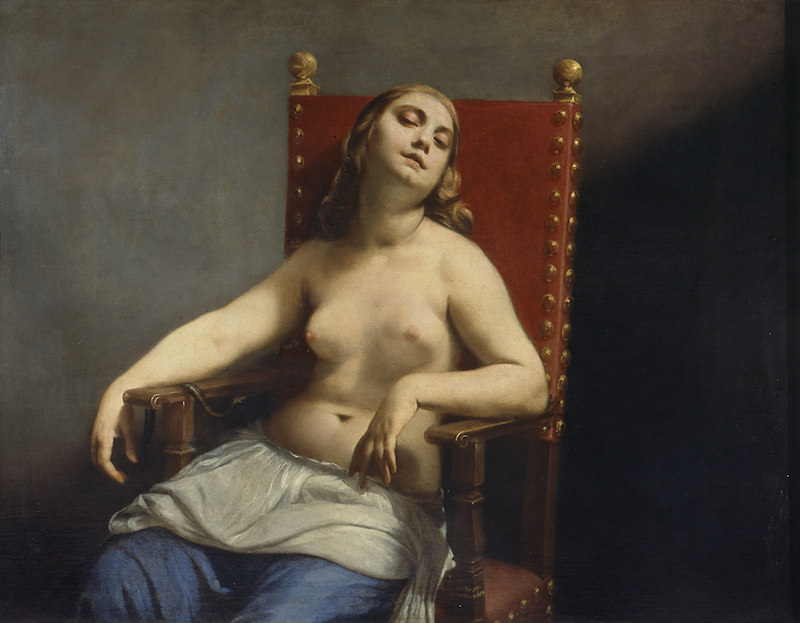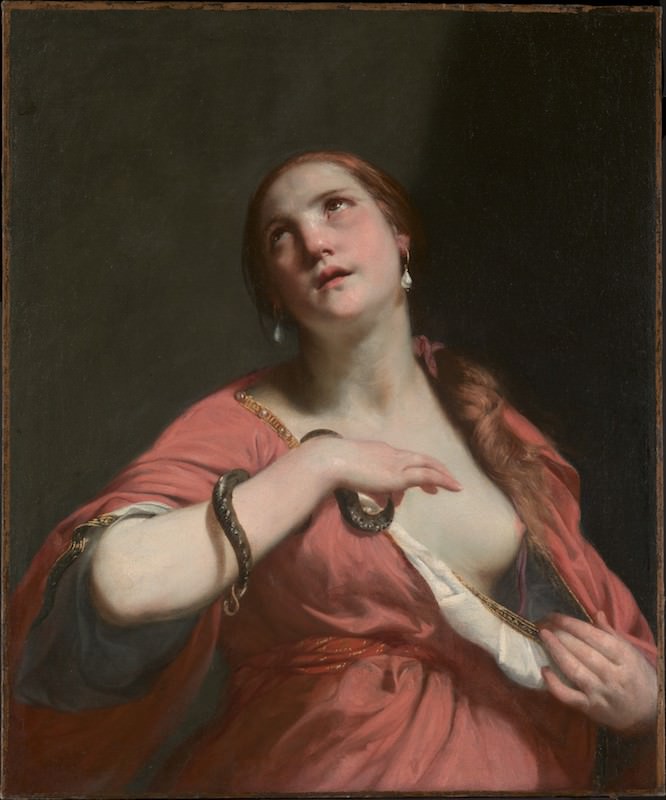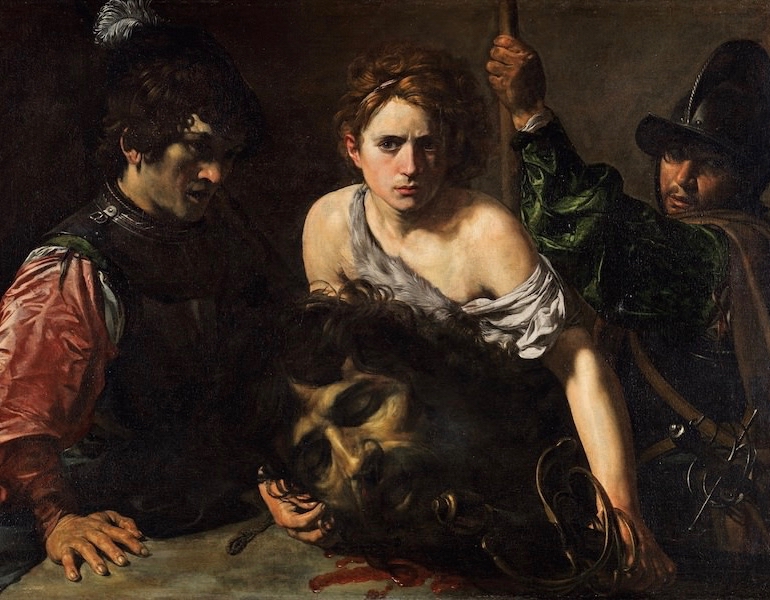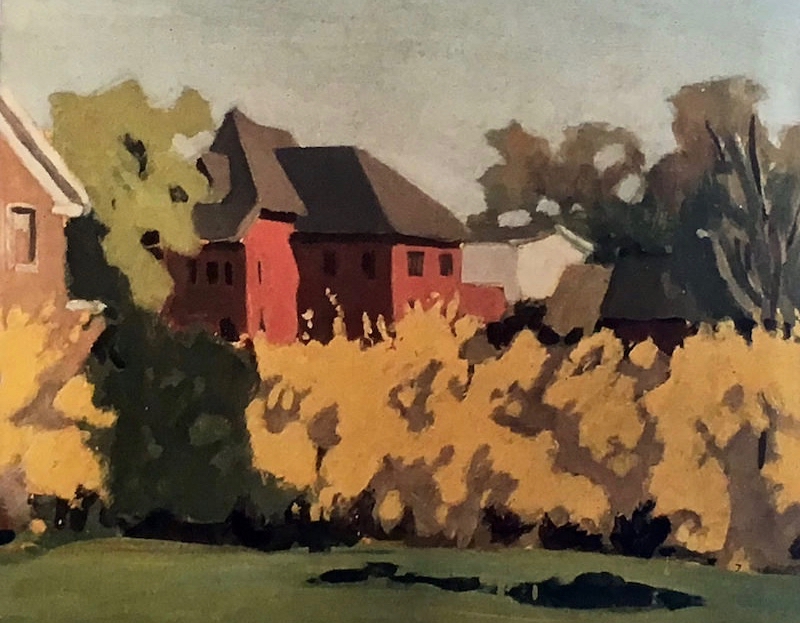
What is it with the Italian baroque artists currently being celebrated in New York City? I’m speaking of the libertine factor. Valentin de Boulogne, the hard-partying protégé of Caravaggio who died after a night of revelry, is enjoying a belated resuscitation at the Met, while Guido Cagnacci is benefiting from a lively push at the Frick, thanks to the loan of a major painting from the Norton Simon Art Foundation. The details of Cagnacci’s life are few and best known to us from criminal reports; an elopement with a wealthy widow was scotched by her family, and his later peripatetic tendencies included adopting an alias while traveling with young women who were dressed as men. These recently renewed attentions have long been in the works. The Met’s Keith Christiansen first proposed a Valentin show in 2008, while Xavier F. Salomon’s interest in Cagnacci had been germinating at least since an Italian journey of the same year. Both curators have made significant contributions to scholarship on the artists, writing books to accompany the exhibitions.

Though Caravaggio’s influence was strong enough to cast a shadow on much of the Italian baroque period, Cagnacci’s references were more varied and his work more eclectic than Valentin’s. It’s thought that he studied with Ludovico Carracci in Bologna, and he briefly lived with and may have been a student of Guercino in Rome. Taking on standard religious themes, for years Cagnacci’s work alternated between lyricism and naturalism, until he fused the strands in his maturity. The most famous and notorious of these fusions date from the mid-1640s to nearly the end of the artist’s life in 1663, when Cagnacci built a unique cottage industry of images conflating mortality and sensuality. His signature theme was the half-length female nude, which satisfied the three standard criteria of such artworks: a narrative foundation, showmanship of technical prowess, and an erotic hook. The first component was necessary to justify the others, but Cagnacci’s cheesecake didn’t meet with unanimous approval, and there’s reason to think his work and personal life were conveniently merged in the popular imagination—then again, traveling with cross-dressing models would have stoked some misgivings in seventeenth-century Italy. Aside from the fact that Cagnacci repeated the same motif, merely varying the secondary elements (an astonishingly kitschy Rape of Europa features an unconvincing damsel in distress beside a bovine head with floral crown; in an Allegory of Human Life owned by Nelson Shanks, an undraped lovely clutches a skull and is thus identified as the embodiment of Vanitas), his skills are too finely developed to write him off as a boor. If artists and their patrons had become too sophisticated to take these morality tales seriously, Cagnacci was notable in the extent of his irreverence. The best examples, two of which are on exhibition in New York this month, depict Cleopatra, ostensibly meeting her fate courtesy the venom of an asp, but looking suspiciously rapturous in the process.

At the invitation of the young Emperor Leopold, Cagnacci left Venice to spend his last few years as a painter to the Viennese court. While there he accepted an illustrious commission, and the result is now considered a high point of seventeenth-century Italian painting: The Repentant Magdalene, currently in residence at the East Room of the Frick. It’s a very large canvas commanding the far end of the gallery. The figures are life-size. In the foreground lies Mary Magdalene, more naked than not, her expensive finery and jewelry dispersed on the floor around her, symbolic of her renunciation of worldly things. Here is the first miracle Cagnacci wrought in this painting: a chaste female nude who’s up to the transcendent moment, without the subtle salaciousness he’d been honing for years. Mary’s rapt attention is devoted to her sister Martha, who sits before her, pointing at the action taking place behind them. This is the second miracle, a fantastic scene of an angel driving a demon out of the room. The angel—Virtue—is no holographic specter, but is as corporeal as Martha and Mary. Sporting a pudgy adolescent frame, he is less well-muscled for the task than one would expect. The figure of Vice, urged toward the window like oversized vermin, is humorously tangible as well.
The third surprise is that of design. With Mary and Martha set at the bottom of the canvas, Cagnacci placed two servants rushing out to a sunlit veranda on the right, in opposition to Virtue chasing Vice away at the left. A composition with figures storming off in all directions is better suited for staged farce than the strict confines of a painted narrative, yet there’s no denying its success. The forms are remarkably chromatic for a painting over three hundred and fifty years old, the light that streams into the room from both sides still clear as a bell. And what a treat when viewed in relation to even the best Valentins now at the Met, more entrancing in effect, a piece of epic whimsy unmatched in the Caravaggisti’s grave and claustrophobic spaces.
The Repentant Magdalene surpasses anything Cagnacci had done before, as well as most everything painted in Italy during the 1600s. He had a chip on his shoulder—he’d become so identified with sexy little torsos that it was rumored he couldn’t paint a figure below the waist, and in a letter he sneeringly suggested that perhaps a rival artist should be brought in to paint the feet. Cagnacci did more than silence that criticism. With one canvas he placed himself alongside the Carracci, Guercino and Guido Reno.
And then some. Cagnacci’s biographer Pier Giorgio Pasini wrote that in The Repentant Magdalene, “there is a bit of everything: you have Orazio and Artemisia Gentileschi, Titian, Federico Barocci; you have Bronzino and you have Holbein; you have a premonition of Vermeer, of Ingres, of the romantic and naturalistic academy of the nineteenth century.” That’s quite an epitaph for an otherwise minor master. Suffice to say that this fall at the Frick, even the van Dycks in the East Gallery look a little duller by comparison.
Cagnacci’s “Repentant Magdalene”: An Italian Baroque Masterpiece from the Norton Simon Museum will be on view at the Frick Collection until January 22, 2017. Guido Cagnacci: Dying Cleopatra will be on view at the Italian Cultural Institute of New York until January 19, 2017.




